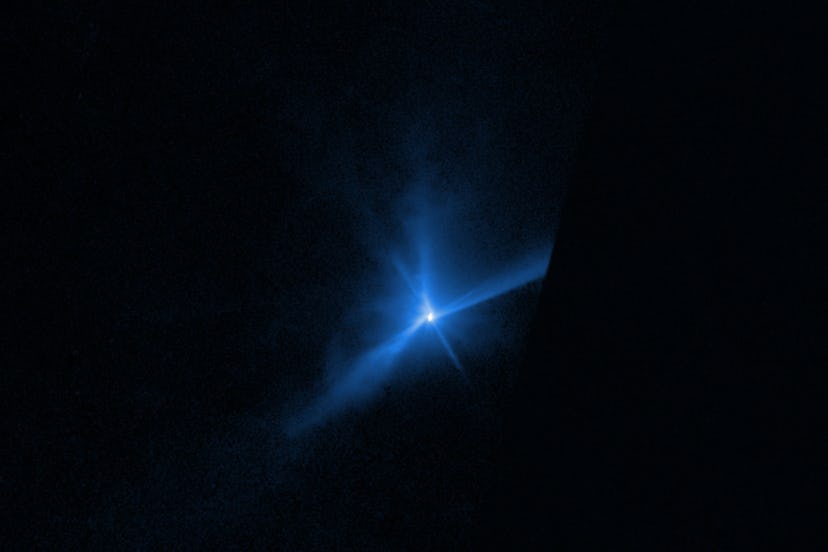ICYMI: Watch An Asteroid Crash Into NASA's Outer Space Defense System
The NASA spacecraft DART was sent to hit a small moon, Dimorphos, and its asteroid, Didymos.

In September 2022, NASA sent a spacecraft into space with a mission to collide with an asteroid. The NASA spacecraft called DART was sent to hit a small moon, Dimorphos, and its asteroid, Didymos, in a test to see if the technology works — in case we need to use it to protect Earth someday.
DART, which stands for Double Asteroid Redirection Test, was the first ever spacecraft dedicated to attempting to change the direction of an asteroid. The test rocket was able to launch, sending the 1,200-pound spacecraft at 13,000 miles per hour, impacting the asteroid.
According to NASA, when DART made impact with the asteroid, it “blasted over 1,000 tons of rock and dust into space.” And on March 1, researchers released new visuals and their peer-reviewed paper giving a detailed overview of DART, its impact, and its aftermath.
Can you explain what I’m seeing in the photos and videos like I’m 5?
One of the new visuals released is a time-lapse movie taken from Hubble showing the aftermath of DART's collision. The video shows “surprising and remarkable, hour-by-hour changes as dust and chunks of debris were flung into space,” NASA says.
“Smashing head on into the asteroid at 13,000 miles per hour, the DART impactor blasted over 1,000 tons of dust and rock off of the asteroid.”
Hubble also took a movie of the impact, and in one view, you can see three overlapping stages of when DART hit the asteroid. This includes “the formation of an ejecta cone, the spiral swirl of debris caught up along the asteroid's orbit about its companion asteroid, and the tail swept behind the asteroid by the pressure of sunlight (resembling a windsock caught in a breeze),” NASA explains.
"The DART impact happened in a binary asteroid system. We've never witnessed an object collide with an asteroid in a binary asteroid system before in real time, and it's really surprising. I think it's fantastic. Too much stuff is going on here. It's going to take some time to figure out," said Jian-Yang Li of the Planetary Science Institute in Tucson, Arizona.
To read more about the impact and the next stages of DART, visit NASA.
This article was originally published on